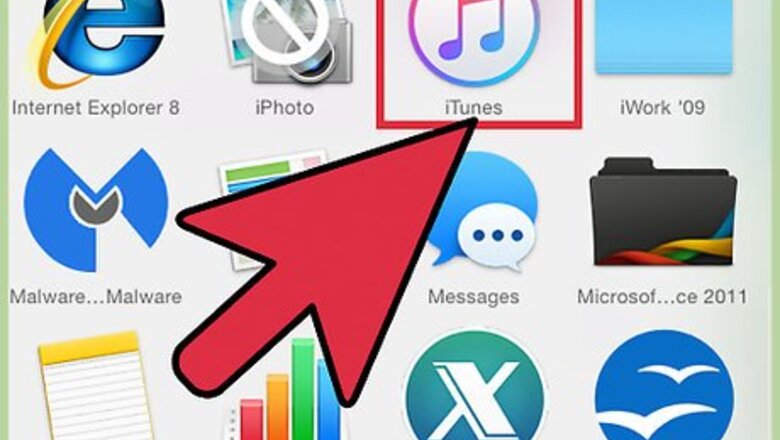
views
Using iTunes with an iPod or Other Devices
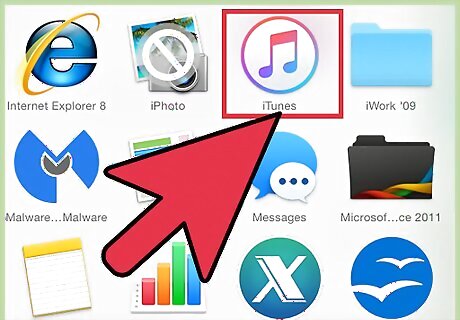
Install iTunes. iTunes is built into the Mac operating system, but Windows users will need to download and install the software from http://www.apple.com/itunes/download. Click “Download Now” to download the setup software. Once the software is downloaded, run the installer and follow the on-screen instructions. If you're using Internet Explorer and run into trouble downloading iTunes, you may need to adjust the filter level of your pop-up blocker. Go to Internet Explorer's “Internet Options” menu and click “Privacy.” Click “Settings” beneath Pop-up Blocker and set the filter level to “Medium.”

Get your music into the iTunes Library. The first time you run iTunes, it will scan your computer for music and add it to the Library. If you've added more music since then or don't see your files in the Library, there are two other ways to do this: Drag the folder into iTunes. If you're using a Mac, open Finder and click Music, then drag-and-drop the desired folders onto the iTunes library. Using Windows, press ⊞ Win+E to open the File Explorer, located your music folder, and drag-and-drop onto the iTunes Library. The other way (on either operating system) is to open the File menu and click “Add to library.” Select the folder or folders you'd like to add and click “Ok.” If you don't know where your music files are stored on your Windows computer, press ⊞ Win+F to open Windows Search. Type *.mp3 (or .ogg, .flac, .mp4, etc) in the search box and press ↵ Enter. When the files are returned, right-click on one and choose “Properties.” The full path to the file will appear next to Location.
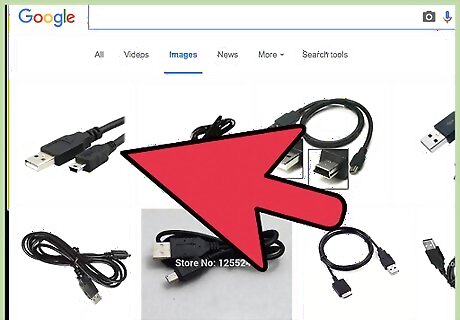
Connect the Mp3 player to the computer. Using the USB cable that came with your device, plug your device into your computer. If it's your first time doing this, your computer should begin to install drivers automatically.

Find the Mp3 player in iTunes. As long as your Mp3 player is compatible with iTunes, it will show up in the software automatically. If you run into any issues, make sure you're using the latest version of iTunes. iTunes 10 and below: Your device will appear on the left side of the screen under the “Devices” menu. It may show up as the manufacturer of your Mp3 player (i.e., “Sony Mp3”) or your name (“Maria's iPod”). iTunes 11: On the upper right corner of iTunes, an icon will appear near the iTunes Store link. It will have a small icon representing an Mp3 player with the name of your player next to it. iTunes 12: On the upper left corner of iTunes, click the Mp3 player icon.
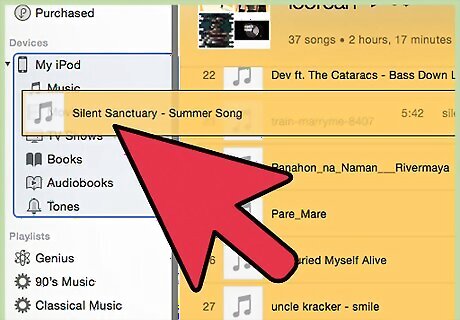
Drag-and-drop files from the Library to your Mp3 player. You can click and drag songs to the device individually or several at a time. If you're not able to drag music to your device, double click on your device and select “Summary” from the left sidebar. In the menu that appears, scroll down to Options and put a check in the box that says “Manually manage music and videos.” If you're still running into trouble, try disconnecting, then reconnecting your Mp3 player. If that doesn't help, try restarting iTunes.
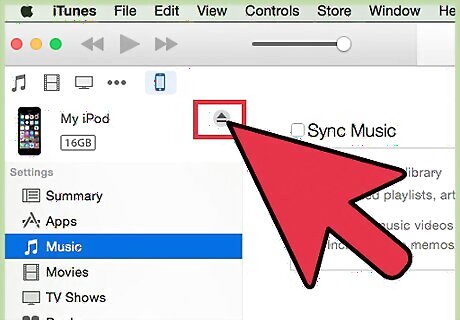
Eject your device. Select your device in iTunes and press ⌘ Cmd+E if you're on a Mac, Ctrl+E if you're using Windows. Unplug your player.

Wait for your Mp3 player to scan the new files. This should happen automatically once you've disconnected it from the computer. If the files don't show up in your Music menu, restart the device to initiate the scan.
Using Windows Media Player in Windows 7, 8.1 or Vista
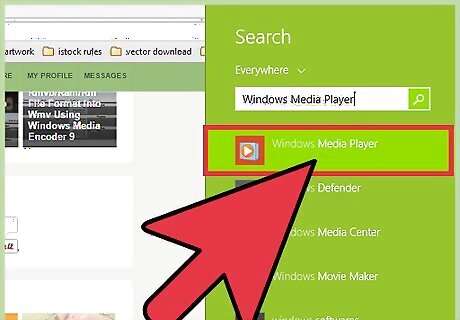
Open Windows Media Player. This will not work with an iPod, but it should for most other Mp3 players. Click Start, and type the word Media into the search box. When Windows Media Player appears in the results, click it to open.

Add music to the Media Player Library. If you don't already use Media Player, you'll need to add your music files to the library. Click “Organize, then “Manage Libraries.” Select “Music.” In the Music Libraries Locations dialog, select the folder where your music is stored and click “Include Folder” to add it to Media Player. If you don't know where your music is stored, you can search your computer by pressing ⊞ Win+F to open Windows Search. Type *.mp3 in the search box and press ↵ Enter. When the files are returned, right-click on one and choose “Properties.” The full path to the file will appear next to Location.
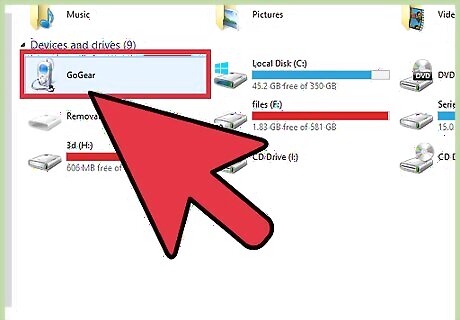
Connect the Mp3 player to the computer. Using the USB cable that came with your device, plug your device into your computer. If it's your first time doing this, your computer should begin to install drivers automatically. If your Mp3 player came with a CD or instructions on how to install drivers, follow the instructions specific to your player's manufacturer.
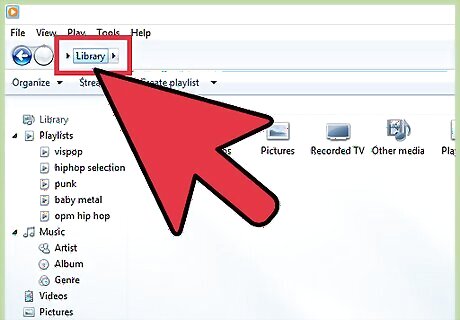
Choose a sync method. If this is your first time connecting your Mp3 player with Windows Media Player open, it will sync your device based on the method it believes works best with your device. Automatic Sync will be selected if your Mp3 player has more than 4GB of storage and everything in your library can fit on the device. Note that if you stay with Automatic Sync, your device will be automatically synced with your Windows Media Player library every time you plug in your device. Manual Sync will be selected if your player has less than 4GB of storage and not all of your music will fit. To switch from Automatic Sync to Manual (or vice versa) Click the “Switch to Library” button in the upper right corner of Media Player. Click the Sync tab, then the “Sync Options button” (the one with the checkmark). Click “Set up Sync” and look for the Device Setup area. Remove the check next to “Sync this device automatically” if you prefer to sync manually, or add a check if you want the process to be automatic.

Click “Sync” to begin adding music to your mp3 player. Your Mp3 player shows up at the top of this tab, likely called something like “My Media Device.” Select and drag the desired music files to your Mp3 player. If you chose to sync automatically, you don't have to complete this step—your files are already syncing.
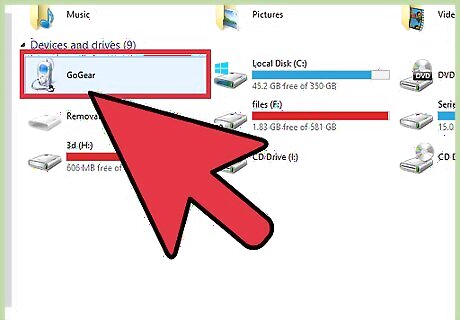
Safely disconnect your Mp3 player once the files have copied. You can do this by clicking on your USB device in the system tray (the lower right hand corner of your screen, near the clock) and selecting “Safely eject hardware.”
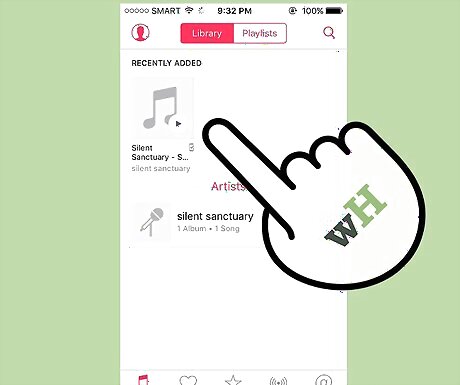
Wait for your Mp3 player to scan the new files. This should happen automatically once you've disconnected it from the computer. If the files don't show up in your Music menu, restart the device to initiate the scan.
Transferring Manually in Windows

Connect the Mp3 player to the computer. Using the USB cable that came with your device, plug your device into your computer. If it's your first time doing this, your computer should begin to install drivers automatically. If your Mp3 player came with a CD or instructions on how to install drivers, follow the instructions specific to your player's manufacturer.
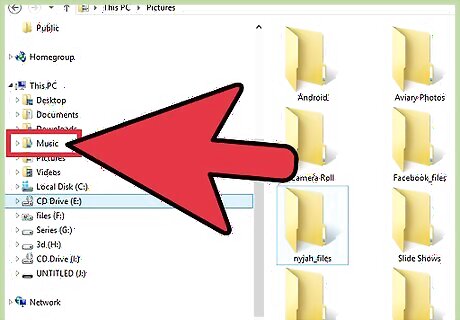
Find the folder on your computer that contains your music. Launch the File Explorer in any version of Windows by pressing ⊞ Win+E and navigate to the folder which contains your music. If you don't know where your music files are stored on your Windows computer, press ⊞ Win+F to open Windows Search. Type *.mp3 (or .ogg, .flac, .mp4, etc) in the search box and press ↵ Enter. When the files are returned, right-click on one and choose “Properties.” The full path to the file will appear next to Location.
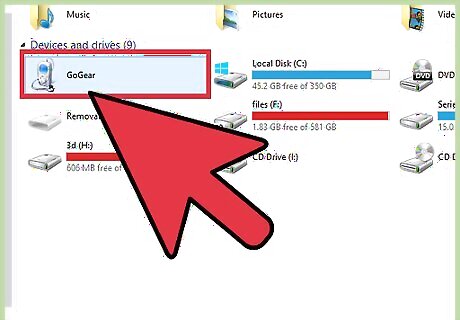
Open another File Explorer window to view your Mp3 Player. Press ⊞ Win+E and expand the Computer menu on the left side of the screen. Double-click on your Mp3 player, which should be called something like “Removable Disk” or “Mp3 Player.”
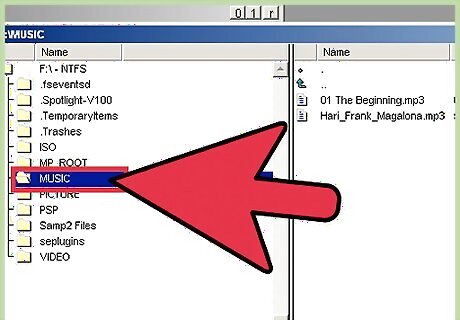
Find the Music folder on your Mp3 player. Check the instructions that came you're your device for the exact place to store your music files, but most players have a folder called “Music.” Once you've located the folder, open it by double-clicking.
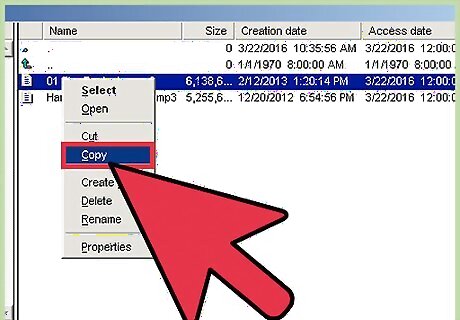
Drag the songs to the Mp3 player. In the first File Explorer window (the one open to the music folder on your PC), select the files you want to transfer. Most Mp3 players will allow you to drag an entire folder (or folders) to the device, so don't panic if you you're your files neatly organized by artist. Highlight the files drag them to the other File Explorer screen (the one open to the Music folder on your Mp3 device).
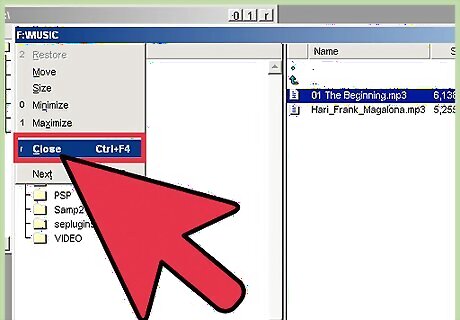
Close the File Explorer windows. Make sure the songs are copying before you do this.
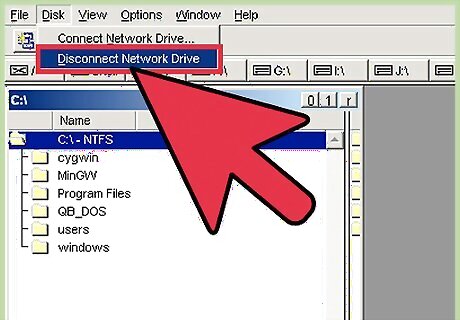
Safely disconnect the Mp3 Player. You can do this by clicking on your USB device in the system tray (the lower right hand corner of your screen, near the clock) and selecting “Safely eject hardware.”
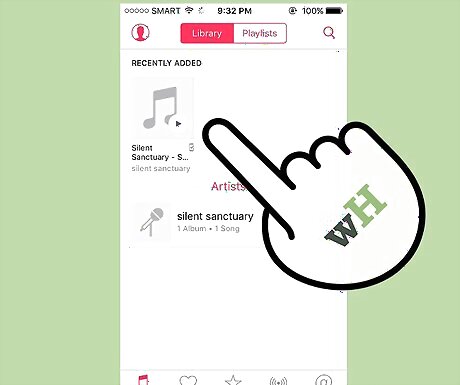
Wait for your Mp3 player to scan the new files. This should happen automatically once you've disconnected it from the computer. If the files don't show up in your Music menu, restart the device to initiate the scan.











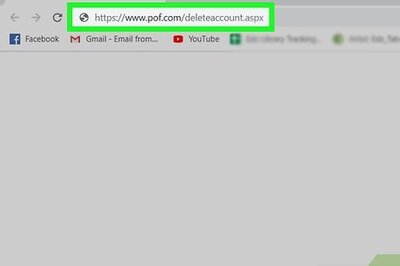





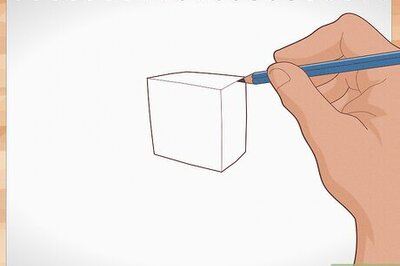
Comments
0 comment